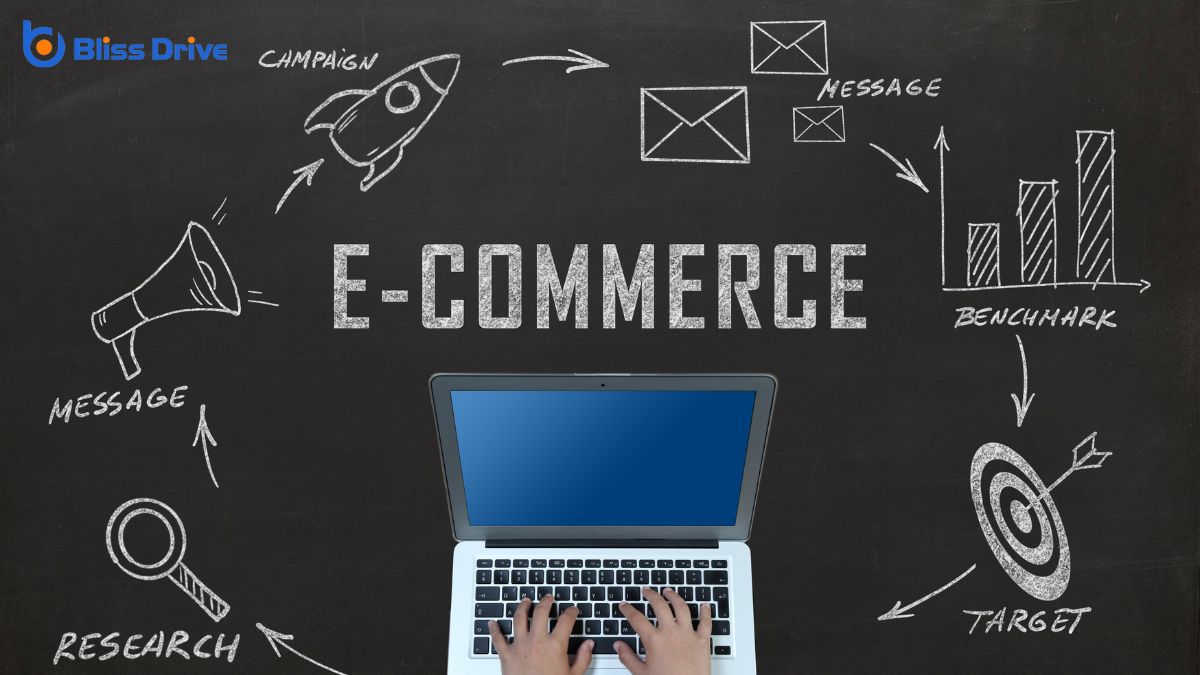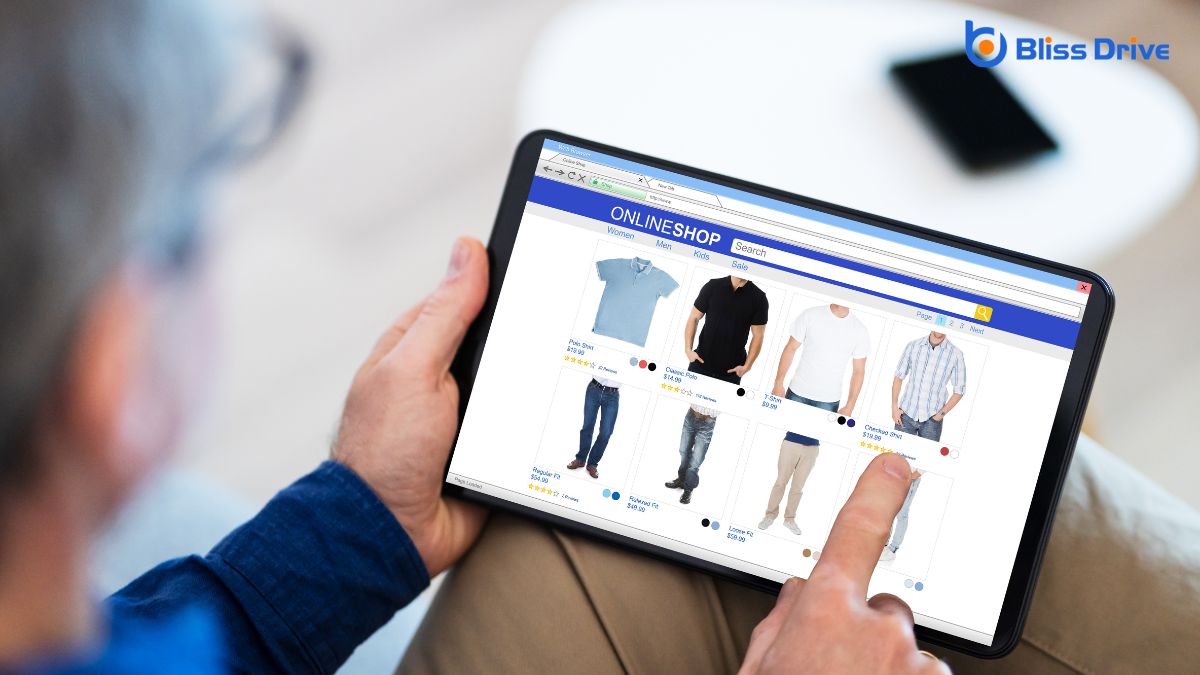Learn More About Us

You're browsing an ecommerce site, but it's taking forever to load. Frustrating, right? You might wonder what's causing this delay. It could be those heavy images or maybe the excessive plugins. Perhaps even the web hosting is dragging its feet. There's more to uncover, like inefficient code or missing CDNs. Curious how these factors are impacting your online shopping experience?

Images play an essential role in ecommerce sites, but heavy and unoptimized ones can greatly slow down your site. You might think high-quality images are necessary for showcasing products, but if they're not optimized, they could be hurting your site's performance.
Large image files take longer to load, which can frustrate potential customers and leadA potential customer referred by an affiliate who has shown interest in the product or service but h... to increased bounce rates. To prevent this, guarantee your images are compressed without losing quality. Use appropriate file formats like JPEG or PNG, and adjust the dimensions to suit your design.
Implement lazy loading to defer off-screen images until they're needed. This approach not only enhances user experience but also improves search engine rankings. By optimizing images, you guarantee faster load times and a more efficient ecommerce site.
To speed up your ecommerce site, focus on trimming excessive HTML and CSS that can bloat your pages.
Make certain that JavaScript loads efficiently to prevent slowdowns during user interactions.
Although a visually appealing ecommerce site might attract customers, an excessive amount of HTML and CSS can greatly slow it down. When your website's code is cluttered, browsers take longer to load pages, frustrating potential buyers.
You might think adding more elements enhances user experience, but too much code leads to sluggish performance.
Focus on streamlining your HTML and CSS. Combine similar styles, remove redundant code, and use shorthand properties. These actions reduce the file size and improve load times.
Consider using external stylesheets instead of inline CSS to keep your code organized and manageable. Also, eliminate unused styles and tags, which only add unnecessary bulk.
JavaScript is the backbone of many dynamic features on your ecommerce site, but if it's unoptimized, it can become a major bottleneck. When JavaScript files aren’t structured efficiently, they load slowly, causing delays that frustrate users and increase bounce rates.
To improve speed, you should guarantee that scripts aren’t unnecessarily large or complex. Prioritize loading essential scripts first and defer non-critical ones.
Consider minifying JavaScript files to remove whitespace and comments, reducing file size without affecting functionality. Leverage asynchronous loading so scripts don’t block other page elements from appearing.
Also, analyze your code for redundancies and streamline wherever possible. By optimizing JavaScript, you’ll enhance user experience and boost conversions, keeping your site competitive in a fast-paced digital market.
When you have too many plugins and extensions on your ecommerce site, performance issues are almost inevitable. Each plugin or extension adds extra code, which can slow down your site’s loading timeThe time it takes for a webpage to fully load, affecting user experience and conversion rates..
It’s vital to evaluate the necessity of each plugin. Ask yourself if it enhances user experience or if you can achieve the same result without it. Overloading your site with unnecessary features can lead to increased server requests and potential conflicts between plugins, further degrading performance.
Focus on quality over quantity. Select plugins that are well-coded and regularly updated.
Regularly audit your plugins to verify they’re still needed and performing efficiently. By keeping your plugin list lean and essential, you’ll maintain a faster, more reliable ecommerce site for your customers.
Effective caching techniques are essential for speeding up your ecommerce site, but when these techniques are ineffective, they can become a significant bottleneck. Caching stores copies of frequently accessed data, reducing load times.
However, if your caching strategy isn’t optimized, it can slow down your site. For instance, if the cache isn’t updated regularly, users might see outdated content. Improper cache configuration can also lead to unnecessary server requests, negating caching benefits.
Make certain you’re caching the right elements—like images, scripts, and stylesheets—and use tools like browser caching and Content Delivery Networks (CDNs). Regularly monitor and adjust your caching settings to match your site’s needs.
While effective caching can greatly enhance your ecommerce site's speed, it's not the only factor at play. Your web hosting service plays an essential role in determining how quickly your site loads.
If your hosting provider is slow or overloaded, your site can experience delays, which frustrate potential customers. You might think all hosting services are the same, but they aren’t. A slow server response time can result in a poor user experience, causing visitors to abandon your site.
Consider upgrading to a reliable hosting provider with ample resources and bandwidth. Shared hosting plans might be cheaper, but they often come with performance trade-offs.
Investing in a dedicated or cloud-based hosting plan can provide the speed and reliability your ecommerce site needs to thrive.
Unoptimized JavaScript and CSS files can greatly drag down your ecommerce site's load times, frustrating potential customers.
By minifying and compressing these files, you can streamline their performance, ensuring quicker access to your pages.
Additionally, using asynchronous loading allows your content to load more efficiently, improving the overall user experience.
When your ecommerce site is sluggish, unoptimized JavaScript and CSS files are often the culprits behind extended load times.
These files can be bloated with excessive code, causing browsers to take longer to process them. As a result, your site’s performance suffers, and potential customers might leave before even seeing your products.
You mightn't realize how these files impact load times, but every additional line of code or unnecessary comment adds up. Each element that isn’t streamlined can slow things down.
Large, unoptimized scripts delay rendering, leading to frustrated users waiting for pages to load.
To improve performance, focus on cleaning up your JavaScript and CSS files, ensuring they're only as large as necessary for your site’s functionality.
One effective way to boost your ecommerce site's speed is by using minification and compression for JavaScript and CSS files.
Minification involves removing unnecessary characters like spaces, line breaks, and comments from your code without altering its functionality. This process reduces file size, allowing faster loading times.
Compression, on the other hand, decreases the size of files further by using algorithms to shrink them. When your server sends compressed files to a user's browser, they download quicker, improving your site's performance.
After implementing minification and compression, you might still notice areas for improvement in your ecommerce site's speed.
One effective strategy is asynchronous loading for JavaScript and CSS files. This approach allows your site to load essential content first without waiting for every script and style to finish loading. By doing so, you enhance user experience, as customers can interact with your site while additional elements load in the background.
Unoptimized JavaScript and CSS files can slow rendering, frustrating users, and increasing bounce rates. Asynchronous loading prevents these issues by prioritizing content that matters most.
You'll notice faster load times and better performance. By adopting this technique, you guarantee a smoother, more efficient site that keeps users engaged and satisfied, ultimately boosting conversions.
Although often overlooked, the absence of Content Delivery Networks (CDNs) can considerably slow down an ecommerce site. You might wonder how this happens.
CDNs work by distributing your site's content across multiple servers worldwide. When someone visits your site, the CDN delivers content from the server closest to them, reducing loading time. Without a CDN, all users must access your site's content from a single server location, leading to longer load times, especially for international customers.
Using a CDN enhances your site's speed and scalability, improving the user experience and potentially boosting sales. The absence of one means you risk losing customers who won't wait for slow-loading pages.
Investing in a CDN can make your ecommerce site faster and more reliable.
Redirect chains and broken links can greatly slow down your ecommerce site, hurting your page speedThe time it takes for a webpage to load, affecting user experience and conversion rates. and SEO.
When users encounter these issues, they may leave your site, leading to traffic loss and a poor user experience.
Fixing these problems guarantees smoother navigation and retains customer interest.
Why does page speed matter so much for ecommerce sites? It directly impacts user experience and conversionThe completion of a desired action by a referred user, such as making a purchase or filling out a fo... rates. If your site takes too long to load, potential customers might leave before even seeing your products.
Redirect chains and broken links are common culprits that slow down page speed. Each redirect adds extra time, making users wait longer to reach their destination. Broken links frustrate users and can lead to abandoned shopping carts.
To maintain ideal speed, check for unnecessary redirects and fix broken links regularly. Tools like redirect checkers can help streamline this process.
When it comes to SEO and traffic, redirect chains and broken links can be silent killers. They might seem minor, but they can greatly damage your site's performance.
Redirect chains occur when one URL redirects to another, which then redirects yet again. This chain reaction can slow down your site, frustrating users and search engines alike. Search engines prefer direct paths; lengthy redirects can lower your site's ranking.
Broken links, on the other hand, lead to nowhere. They create a poor user experience, causing visitors to leave your site.
Search engines view broken links negatively, potentially resulting in traffic loss. Regularly check for these issues using tools like Google Search ConsoleA tool by Google that helps monitor and maintain your site's presence in search results.. Fixing them helps maintain your site's SEO health and keeps traffic flowing.
Despite their seemingly minor nature, redirect chains and broken links can severely impact the user experience on your ecommerce site.
Every time a user clicks a link that leads to a redirect chain, their patience wears thin as they're shuffled through multiple URLs before reaching their desired page. This not only slows down navigation but can frustrate users enough to abandon their purchase.
Broken links are equally hazardous. They lead users to dead ends, creating a sense of confusion and disappointment.
Imagine browsing a store and finding doors that lead nowhere; it's not great for business. To maintain a seamless user experience, regularly audit your site for redirect chains and broken links.
Fixing these issues guarantees users enjoy a smooth, frustration-free shopping experience.
Efficient database management is essential for an ecommerce site to perform smoothly, as disorganized or outdated databases can drastically slow down operations. When your database isn't optimized, it affects everything from loading times to search functions.
If users experience delays while browsing or checking out, they're likely to abandon their carts, leading to lost sales. Keep your database clean by regularly removing obsolete data and ensuring indexingThe process of adding web pages into a search engine's database. is up-to-date. This helps your site respond swiftly to queries.
Also, consider implementing caching strategies and compressing data to improve access speeds. By taking these steps, you'll maintain a responsive site that keeps customers engaged.

Although desktop browsing still holds its place, mobile optimizationDesigning and formatting web content to ensure it performs well on mobile devices. is crucial for any ecommerce site aiming for success. You’ve got to guarantee your site performs well on mobile devices because a slow mobile experience can drive customers away.
Mobile users expect quick load times and seamless navigation. If your site isn’t optimized, images mightn't display correctly, buttons could be too small to click, and pages may load slowly. These issues frustrate users, leading them to abandon your site for a competitor’s.
To prevent this, focus on responsive designA web design approach that makes web pages render well on a variety of devices and window or screen ..., optimize images, and use mobile-friendly layouts. Make certain everything is easy to navigate on smaller screens.
To speed up your ecommerce site, focus on optimizing images, streamlining your code, and limiting plugins. Don't forget about effective caching and choosing a reliable web host. Implement a CDN to distribute content efficiently and avoid unnecessary redirect chains. Guarantee your database is well-managed and that your site is mobile-friendly. By addressing these issues, you’ll enhance user experience, reduce bounce rates, and ultimately boost sales. Remember, every second counts in retaining customers!
